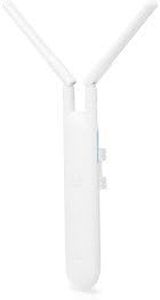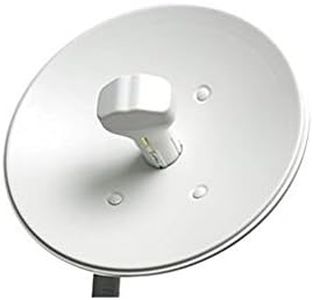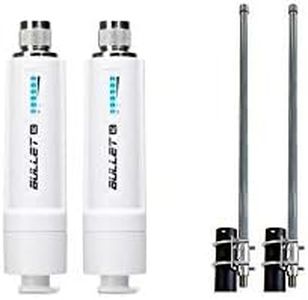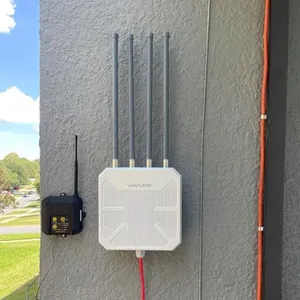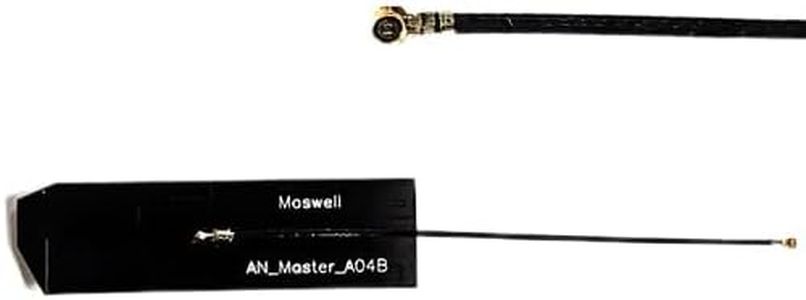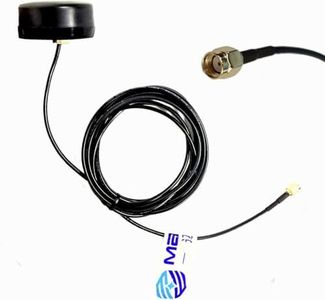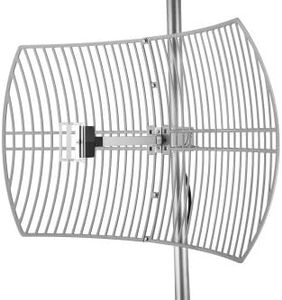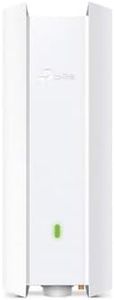10 Best Exterior Wi-Fi Antennas 2025 in the United States
Our technology thoroughly searches through the online shopping world, reviewing hundreds of sites. We then process and analyze this information, updating in real-time to bring you the latest top-rated products. This way, you always get the best and most current options available.

Our Top Picks
Winner
Ubiquiti Networks Networks UAP-AC-M-US UniFi AC Mesh Wide-Area In/Out Dual-Band Access Point (US Version)
Most important from
748 reviews
The Ubiquiti Networks UAP-AC-M-US UniFi AC Mesh Wi-Fi Access Point is a versatile choice for both indoor and outdoor settings. It operates on a dual-band frequency, offering 2.4 GHz and 5 GHz bands, which ensures robust and flexible connectivity. The device includes adjustable dual-band omnidirectional antennas, enhancing its adaptability to various environments, whether you're aiming for broad coverage or more focused, high-density areas.
One of its standout features is the mesh multi-hop capability, allowing extensive area coverage with minimal infrastructure, making it ideal for large outdoor spaces such as parks or campuses. Additionally, it supports multiple power options, including 802.3af PoE and 24V passive PoE, adding to its flexibility and ease of installation.
The access point is also weatherproof, which is crucial for outdoor use, ensuring durability against various weather conditions. This access point is well-suited for both home and business use, particularly in scenarios requiring wide-area coverage and reliable performance.
Most important from
748 reviews
Ubiquiti AM-5G20-90 Airmax 5GHz 2x2 MIMO Base Station Sector Antenna
The Ubiquiti AM-5G20-90 UISP airMAX 2x2 BaseStation 5 GHz antenna is a robust choice for those looking to enhance their Point-to-MultiPoint (PtMP) network coverage. Operating on a 5 GHz frequency band, this antenna offers a high gain of 20 dBi, which means it can send and receive signals over long distances. This makes it ideal for outdoor environments where you need to cover large areas, such as a campus or a large property.
Its design is quite sturdy and weatherproof, ensuring it can withstand various outdoor conditions without performance degradation. The antenna seamlessly integrates with Rocket Radio, making it easy to set up and use, even for those who may not be tech experts. Additionally, its excellent cross-polarization isolation helps in reducing interference, ensuring a clear and reliable signal.
If you are looking for a high-performance, long-range antenna for outdoor use, this product from Ubiquiti is a strong contender.
Ubiquiti NanoBridge M5 (NB-5G25 US) 5GHz airMAX 2x2 Dish Antenna Feed
Most important from
50 reviews
The Ubiquiti NanoBridge M5 is a specialized exterior Wi-Fi antenna designed for various outdoor networking needs. It operates at a 5GHz frequency band, which is ideal for high-speed data transmission and reduced interference compared to the more crowded 2.4GHz band. A notable strength of this product is its dual usage capability. Without its dish reflector, it provides an effective outdoor-to-indoor coverage, making it versatile for different deployment scenarios. When the dish reflector is attached, it shifts to directional outdoor coverage, enhancing its gain and range, which is beneficial for long-distance connections up to 30 kilometers.
The antenna employs Ubiquiti’s airMAX technology, which is known for robust performance across numerous installations worldwide. This technology, coupled with airOS firmware, supports advanced outdoor multi-point networking, making it a suitable choice for complex network setups. The antenna’s gain and performance heavily depend on the dish reflector, so its effectiveness in certain scenarios might require proper setup and alignment.
The package includes essential components such as the antenna feed, feed support, and a power adapter. Its moderate weight and dimensions suggest ease of installation, but users should plan for the space it will occupy. Its design dates back to 2011, but it remains a popular choice, ranking well in computer networking antennas. This product is particularly beneficial for users needing reliable outdoor Wi-Fi solutions over extended distances, provided they can accommodate its setup requirements.
Most important from
50 reviews
Buying Guide for the Best Exterior Wi-Fi Antennas
Choosing the right exterior Wi-Fi antenna can significantly improve your wireless network's range and performance. Whether you need to extend your Wi-Fi coverage to a large outdoor area, connect multiple buildings, or simply boost your signal strength, understanding the key specifications will help you make an informed decision. Here are the essential specs to consider when selecting an exterior Wi-Fi antenna.FAQ
Most Popular Categories Right Now


